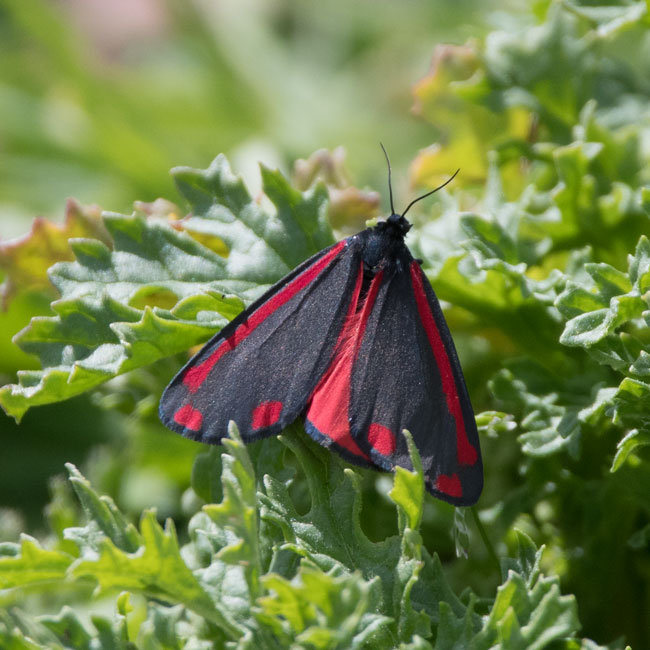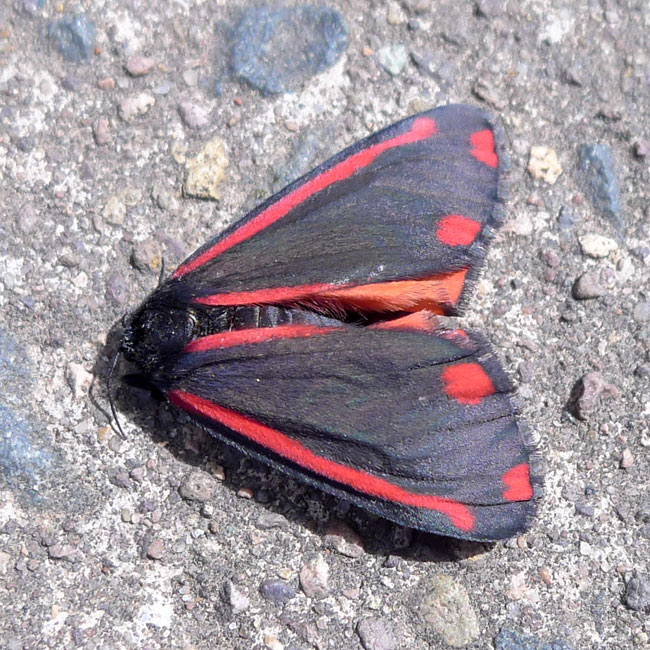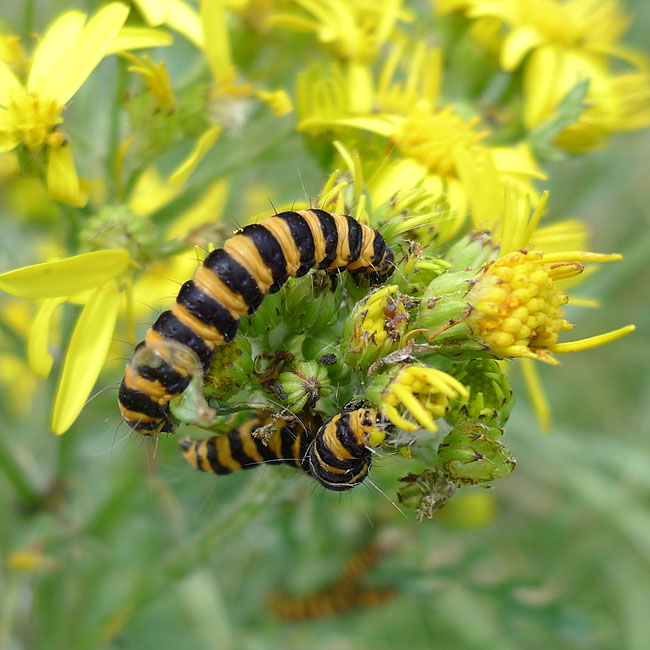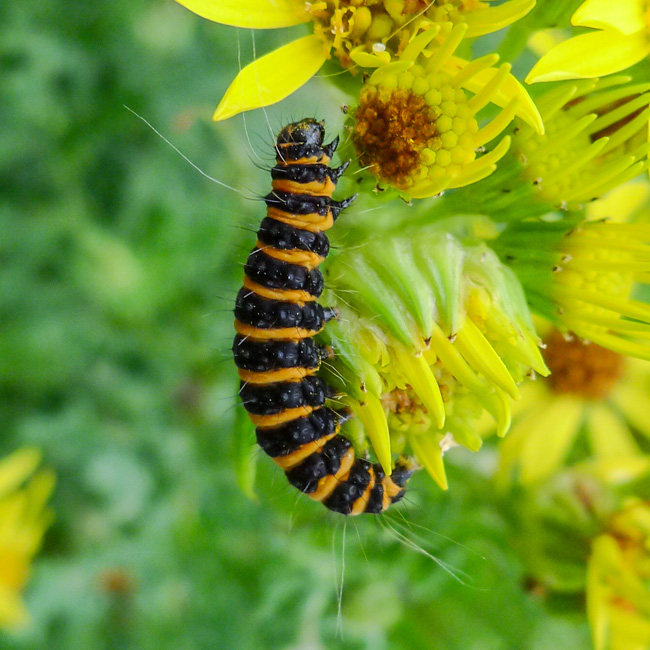
|
Cinnabar Moth
|
||
|
Taken
at Torness on 6th June 2021 using Nikon D500 with Sigma 600 mm zoom lens.
|

|
|


| Caterpillar. Taken at Barns Ness on 18th July 2021 using Panasonic Lumix LX5 in macro mode |
 |

| Taken at Skateraw on 8th August 2017 using Panasonic Lumix LX5 in macro mode |  |

| Cinnabar Moth. |
| Species: Order: Family: Local Names: |
Tyria jacobaeae. Lepidoptera. Arctiidae. |
| Habitat: Food: Size: Wingspan: Active: Eggs: Feature: |
Wherever its larval foodplant, ragwort and groundsel, are present. Newly hatched larvae feed from the underneath of ragwort leaves and absorb toxic and bitter tasting alkaloid substances from the foodplants, and assimilate them, becoming unpalatable themselves.The bright colours of both the larvae and the moths act as warning signs, so they are seldom eaten by predators. 20 mm long. 32 - 42 mm. Day flying: Up to 300 in batches of 30 to 60. Cinnabar caterpillars can turn cannibalistic. This can be due to lack of food, but they can eat other cinnabar larvae for no apparent reason. This moth has proven to be particularly successful as a biocontrol agent for ragwort when used in conjunction with the ragwort flea beetle in the western United States. |